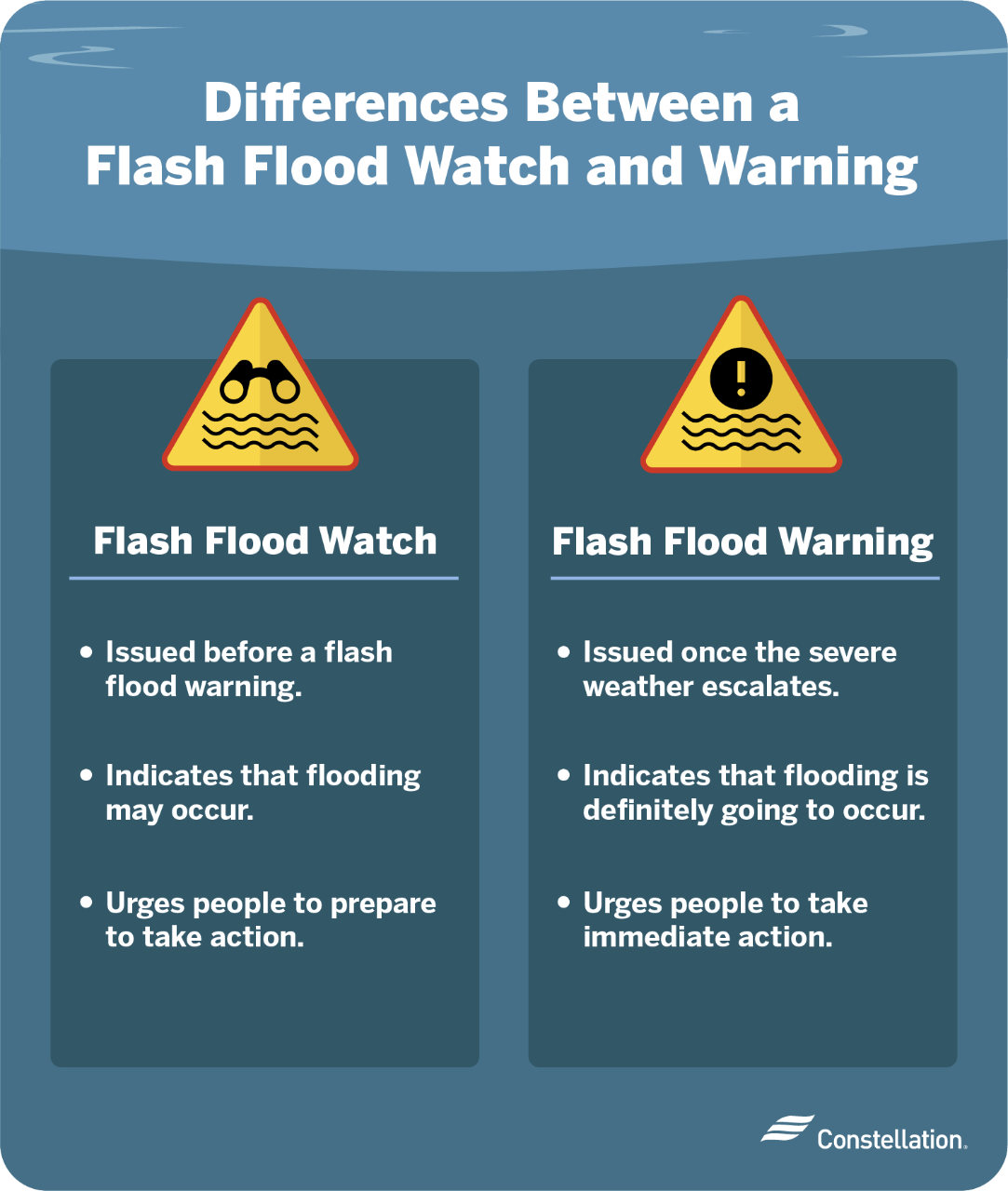Flash floods can be particularly dangerous because you have little time to react. That is why the National Weather Service created a notification system. It’s important to understand what a flash flood warning vs. a flash flood watch is so you can plan accordingly.
While a flood flash warning is often used interchangeably with a flood watch, they are not the same. So, learning the difference between a flood watch vs. advisory, and a flood watch vs. warning is important for your safety.
Flood Advisory Defined
A flood advisory lets you know that flood conditions are possible. Stay aware and observant and start planning.
Flood Watch Defined
A flood watch is more serious and means that flash flooding is possible. Though not certain, it does make sense to get ready so that you can move quickly should you need to do so. Move appliances to a high floor and gather valuables for quick evacuation.
Flood Warning Defined
The difference between a flood watch and a flood warning is the difference between a possible event and one that will soon occur or is already occurring. A flood warning means that flooding is happening in your area and may soon hit your location. This is the time to take action and get out of danger right away.
What's the Difference Between a Flash Flood Watch and Warning?
Understanding the difference between a flood watch vs. warning can help you thoughtfully prepare and avoid panic.
A flash flood is a sudden and often violent torrent that can develop in hours or even minutes. Usually caused by heavy rain, a flood can also occur in areas downstream that are not experiencing precipitation. If you live near rivers, streams, lakes, or low-lying areas that can flood, always listen for flood watch vs. advisory notifications and be ready to act.
- A flood advisory means that a weather event could cause a flood nuisance, but not a dangerous situation.
- Typically, a flash flood watch is issued first, when flooding is possible, but before it has occurred.
- A flash flood watch does not mean that a flash flood will occur, it is a very good indication that your community will experience weather severe enough to make one possible.
- A flash flood warning means a flash flood is going to happen in your area or that flooding has already started.
- Flash floods can happen fast, leaving little to no time for a flood warning. A flood watch vs. warning is the difference between getting ready to act and taking action to get out of danger.
What Should You Do in a Flash Flood?
Floods are dangerous, yet with knowledge and preparation, you can improve your safety and potentially protect some of your property.
Fast moving water that is even a few inches deep can sweep you off your feet. Water over six inches deep can move a car. Do not underestimate the power of fast-moving water.
Floods can happen fast. Minutes can make the difference. When in doubt, get out. At a minimum, it makes sense to be prepared for a home flood.
- Have an emergency plan and kit ready to go. If you must evacuate quickly, where will you go and how will you get there? What will you take with you? Think about survival items, valuables and important documents.
- Stay up to date on weather forecasts. If you are in an area that could flood, keep tabs on the weather. Set up alerts on your phone and consider adding a dedicated app.
- Don't wait until a warning to take action. Start thinking about executing on your emergency flood plan the minute you hear about a flood advisory. Be ready to go when you hear about a watch–and then do keep watch. If you wait for a warning, it could be too late.
- Follow evacuation orders immediately. And if your own senses tell you to evacuate, don’t wait for an order.
- Move to the highest point possible and call 911 for help if needed. Evacuate to a safe location on high ground. If you can get out, find the highest location possible while you wait for help.
- Do not drive or walk near flooded areas. You may be curious, but don’t needlessly put yourself in danger. You may also hamper rescue operations.
- Don’t forget utilities. You will minimize the chance of fire and can reduce damage by turning off the gas, electricity and water before you evacuate.
See Constellation’s Weather Preparedness Tips & Resources
Extreme weather can happen anywhere. And with it come threats to your safety and property. Preparation can make a major difference, so we have created these tips and guides:
